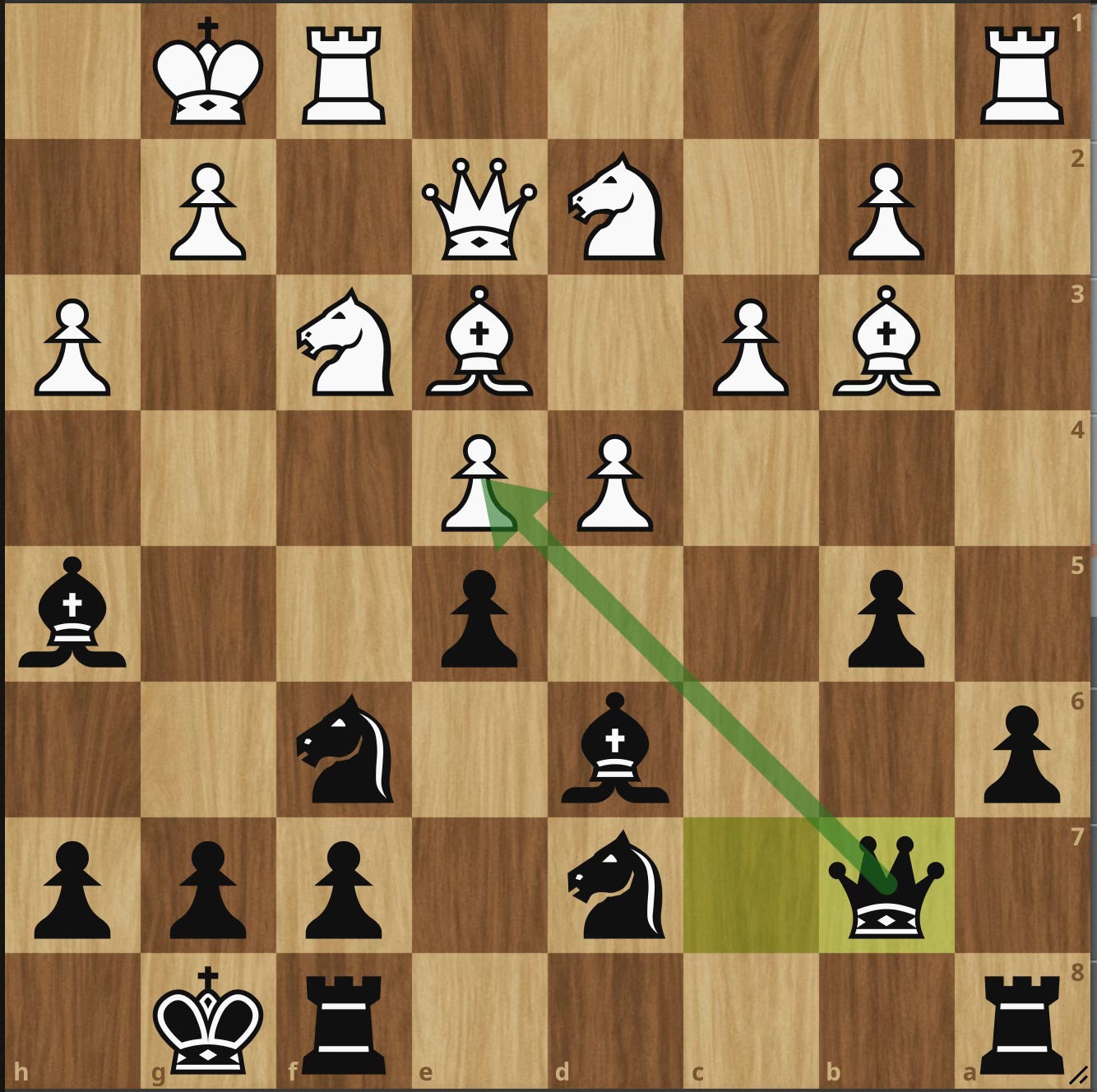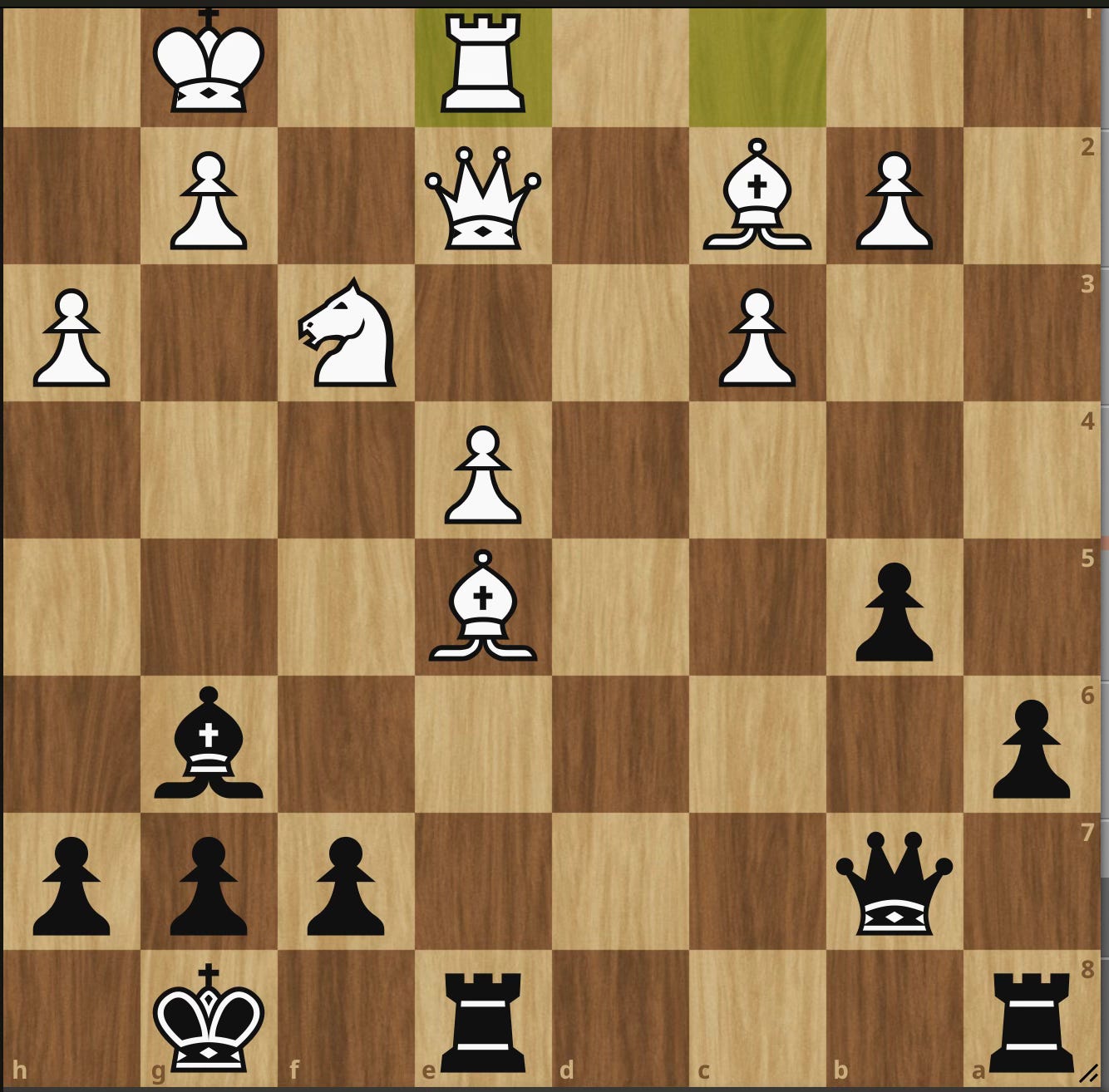Analyze This #7!
Dear Mr. Fantasy...play us a tune
Welcome back to Chess in Small Doses… my continuing attempt to improve at chess while being fully employed, married, and raising a daughter. Today I’m going over my second game from a January Tournament where I went 2/4 winning both games with White. Last time I reviewed Game #1… a nice win. Today… well you can see for yourself.
First let me set the scene. The tournament was set up with two 90 + 30 games each day, one in the morning and one in the afternoon. I had played an older adult (like me) in game 1 and again I was matched against an adult player (a little younger this time). Again, I was nervous but ready. Then he opened with the Fantasy Variation…
1.e4 c6 2.d4 d5 3.f3
I have used GM L’Ami’s Lifetime Repertoire for the Caro Kann to guide me through all the responses to 1…c6. His opening tree has one reply to the Fantasy… 4…dxe4, which is what I played. The Fantasy Variation has been gaining in popularity and I’ve been seeing it more and more. It’s a combative response to the Caro Kann, trying to keep the two center pawns even if Black takes on e4 (my move). The downside is that the f3 square is now blocked and the knight cannot get there.
As I said, I played 4…dxe4 but the Master’s DB has other moves. In fact, 4…e6 surprisingly is the top move in the Master’s DB, with equal chances for Black and White. 4…Qb6 is another surprising response for Black here that scores well at the top level giving Black a 42% win rate! (Check out this game from GM Navara for more on the Qb6 line.)
Looking over my online games after 4…dxe4, it looks like White is kicking my ass to the tune of 60% win rate for White and 20% drawn! I’m just saying, no disrespect to GM L’Ami but I wonder if I should look at other options in the Fantasy because the resulting positions from my line get quite tense.
4…dxe4 5.fxe e5 6.Nf3 Bg4 7.Bc4
The point of taking on e4 and then playing e5 is that the queens Xray each other. This tension is central to the whole line Black plays. White’s choice of 7.Bc4 shows they came to fight. The bishop looks at the f7 pawn and opens a whole bunch of tactics. Amazingly, the only good move for Black here is 7…Nd7 to defend e5. If White then continues with Bxf7+ Kxf7 Ng5+ trying to win the undefended bishop on g4, then Black plays the astounding Qxg5!! and Black wins. However, the possible sacrifice hangs in the air.
7…Nd7 8.O-O Bd6??
I can say I played this move on automatic since it’s often the best move. However after 8.O-O I needed to play 8…Nf6 to block the f1 Rook’s x-ray on f7. Now White can play the Bxf7 sacrifice since after Kxf7, White gets a double check with Ng5+ (or Nxe5+). Thankfully, my opponent missed this tactic as well.
9.c3?? Nf6 10.h3 Bh5 11.Be3? (leaving e4 undefended) O-O? (missing the free e-pawn) 12.Nbd2 Qc7 13. a4 a6 14.Qe2
We’re both close to completing development. His a4 move was to prevent b5 by me, a common move gaining space and a tempo on the c4 bishop. Everything for Black is defended. White has a weak square on g3 importantly. If Black can get the rooks involved, things should at least be equal.
Only getting a complete development with rooks on centralized files is (for some reason) one of my persistent failings. I too often want to mix things up tactically with minor pieces rather than simply putting my rooks on good squares. Instead of trying to force the issue I need to bring more pieces to the party, improving my position. That question - How do I improve my position? - is something I will be asking myself more and more as my competition improves.
Here Stockfish likes the simple Rae8, x-raying the e4 pawn, forcing White to play Bd3 to defend. If not, then Black is ready with exd4 and then Nxe4 winning a pawn.
But that’s not what I did. Instead I went ahead with the b5 move, trying to pressure the Bishop. I needed to improve my rooks to stay in the game.
14…b5 15.axb5 cxb5? (axb5 was better) 16. Bb3 Qb7
I’m trying here to pressure the under-defended e4 pawn. The next few moves will revolve around this pawn, but I don’t ever bring that rook over to get an x-ray on the e-file. OTB all I can say is that I didn’t really know what plan I should have after the b5 move. From Qb7 on I was making it up as I went along. As we found out in the last game, even a bad plan is better than no plan at all. A simple plan would have been to centralize rooks, then open the position.
17.Bc2 Rfc8 18.Rfc1 Bg6 19.Bf2 Nh5 20.Be3?
Not sure what I was doing here. My idea OTB had been that the g3 square was weak. Moves like Ng3, Nf4, or even f5 here all seem interesting. In post-game analysis I was convinced that Ng3 was maybe even winning for Black. While it is good for Black after exd4, the line gets very complicated. In the end, Black is up a pawn after many pieces come off the board.
But I am not Stockfish… I am only human. I saw Ng3 Qd3 Nf6 dxe5 Nfxe4 and couldn’t see much past that. So I did the human thing and told myself a story. I thought that if I just went back to f6 that we’d repeat the position and I’d get a draw. Yes, you read that right. I went in to my second game flush with my first victory and right here I thought “OK, I’ll take the draw.”
There is of course no draw here… something my opponent made very clear to me quickly after.
19…Nhf6? 20. Bg5 Qb8? (exd was simpler and better) 21. dxe5 Nxe5 22.Nxe5 Bxe5 23.Nf3 Bf4 24.Bxf6?!
This was a critical moment. The central tension has resolved, a piece has come off the board, and I am faced with a choice (or so I thought). I can either take back with gxf6 or I can take the rook with Bxc1. Only thing is I didn’t really see the key element of the position. If I play Bxc1, White has an intermezzo with Be5 threatening the Queen. In truth my only move was gxf6. By missing that resource I went from SF -0.6 (Black slightly better), to SF +2.7 (White is winning) after Bxc1. This mistake lost me the game.
Why did I play it? In short, I missed the intermezzo. Analyzing it deeper, I only took 2 minutes off the clock to make two moves: 23….Bf4 and 24…Bxc1. That 2 minutes was mostly to find Bf4 (a decent move). I think I must have made Bxc1 nearly automatically and was honestly surprised with 25.Be5. Bummer but something entirely in my control. Slowing down and letting the position reveal itself to me is a habit to work on or I will stay stuck around this level.
24…Bxc1?? 25.Be5! Qb7? 26.Rxc1 Re8? 27.Re1
Black has two Rooks, a Queen, and a Bishop. White has a Queen, a Rook, and three minor pieces including the bishop pair. The board is open and soon the LSB will come to a more useful angle. This position is almost lost and resign-able. All I could think of was trying to push the an and b pawns and see if I could get a promotion. It turned out to be too slow. The rest of the game didn’t take much longer. This is move 27 and I resigned 10 moves later.
27…f6 28.Bd4 a5 29.Bb3+ Bf7 30.Bc2 Bc4? 31.Qf2 a4 32.Qh4
OK, now I’m truly in trouble. The board is menacing. I don’t see a good plan, only resistance.
32…h6 33.e5! fxe 34.Nxe5 Bd5 35.Qg3 b4?? (Ra6 was only defense, controlling the g6 square) 36.Qg6! a3 37.Rf1!
There is no escape now. Qh2# is coming next, so I resigned. 1-0
What did I learn?
It’s not the opening, but it’s what I do with it that matters.
When I don’t know what to do, just try to improve one piece.
Mentally was ready to settle for a draw. That is not the right approach, we play to win.
Playing too fast and playing moves on autopilot lost the game for me.
Please let me know if you learned anything from this game. I know I did. Would love to hear your comments if you’ve played the Fantasy Variation on either side. See you all next week with another game! Thanks again for reading Chess in Small Doses!














Thankyou. Great post Doc. I suggest you try Sielecki on Chessable for good line v Fantasy Variation.